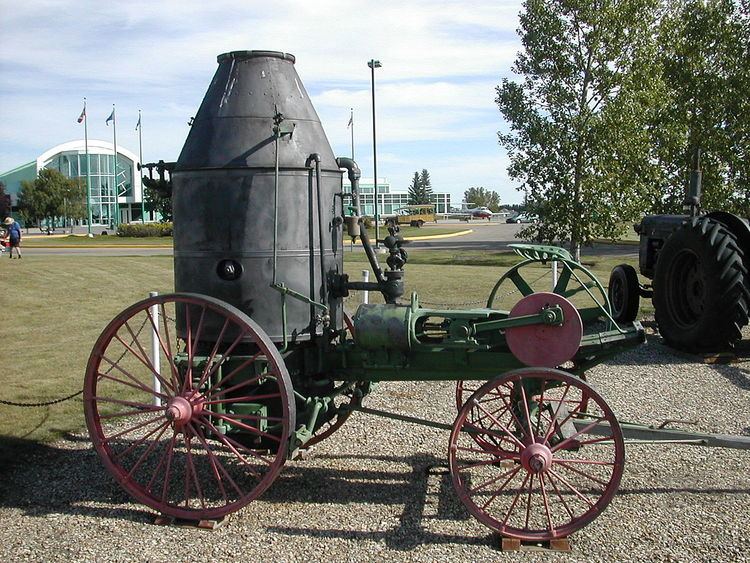 | ||
The Westinghouse Farm Engine was a small, vertical-boilered steam engine that emerged in the late nineteenth century. In the transition from horses to machinery, small portable engines were hauled by horses from farm to farm. Many small workshops produced them. As a side line to the airbrake products, George Westinghouse made this horse-drawn, vertical-boilered and horizontal-cylinder engine. It looked like a coffee pot on wheels. It came in 6, 10 and 15 HP sizes. The engines were produced from 1886 to 1917 when they were superseded by larger standard farm engines. Many engines of this make were sent to South America where they were popular.
Henry Ford worked with one on a farm and it became a favourite of his. For a time Ford worked for the Westinghouse Company as a mechanic for their farm engines, and now one features in his museum at Dearborn, Michigan.
